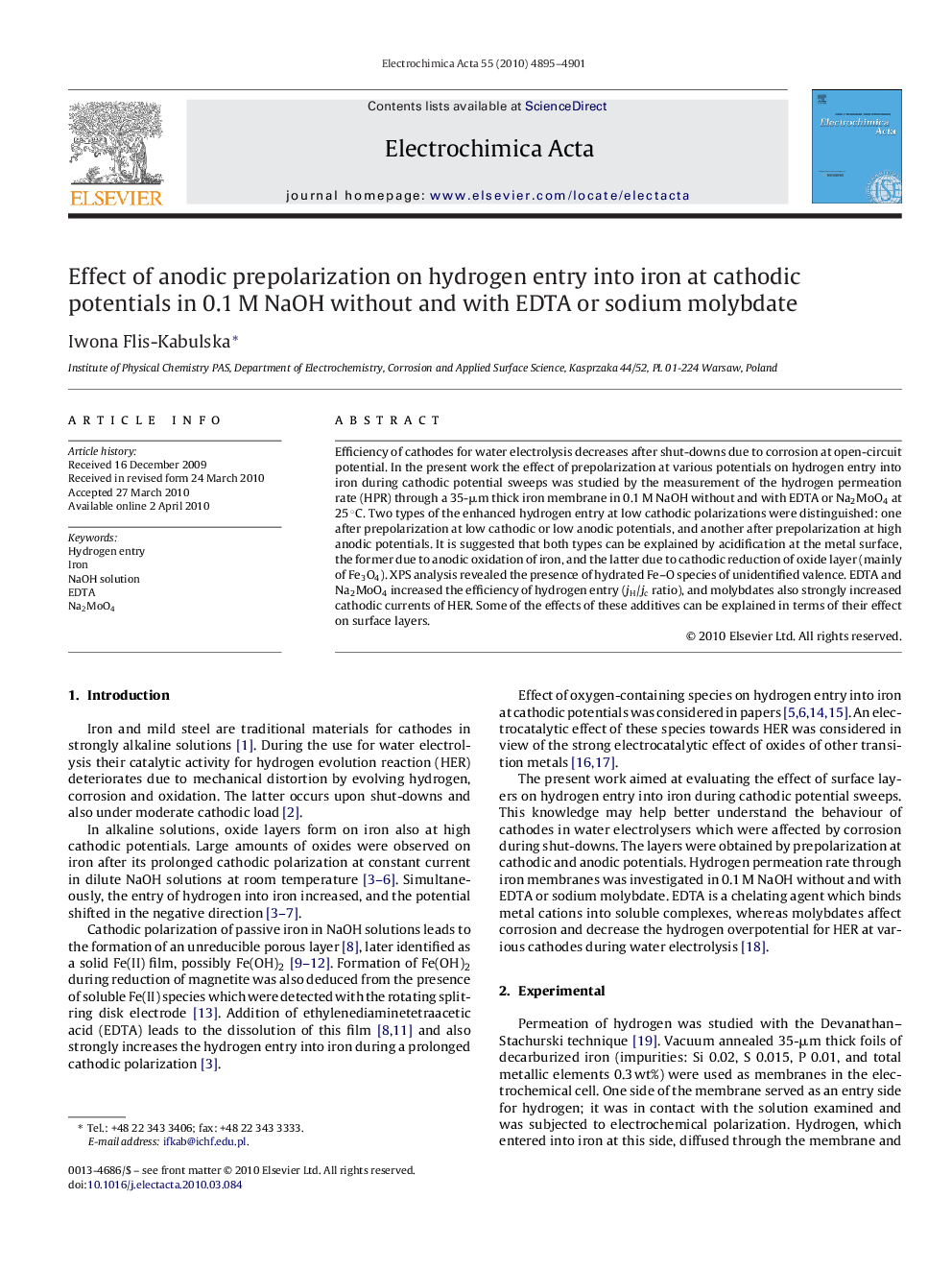| Article ID | Journal | Published Year | Pages | File Type |
|---|---|---|---|---|
| 190561 | Electrochimica Acta | 2010 | 7 Pages |
Efficiency of cathodes for water electrolysis decreases after shut-downs due to corrosion at open-circuit potential. In the present work the effect of prepolarization at various potentials on hydrogen entry into iron during cathodic potential sweeps was studied by the measurement of the hydrogen permeation rate (HPR) through a 35-μm thick iron membrane in 0.1 M NaOH without and with EDTA or Na2MoO4 at 25 °C. Two types of the enhanced hydrogen entry at low cathodic polarizations were distinguished: one after prepolarization at low cathodic or low anodic potentials, and another after prepolarization at high anodic potentials. It is suggested that both types can be explained by acidification at the metal surface, the former due to anodic oxidation of iron, and the latter due to cathodic reduction of oxide layer (mainly of Fe3O4). XPS analysis revealed the presence of hydrated Fe–O species of unidentified valence. EDTA and Na2MoO4 increased the efficiency of hydrogen entry (jH/jc ratio), and molybdates also strongly increased cathodic currents of HER. Some of the effects of these additives can be explained in terms of their effect on surface layers.
